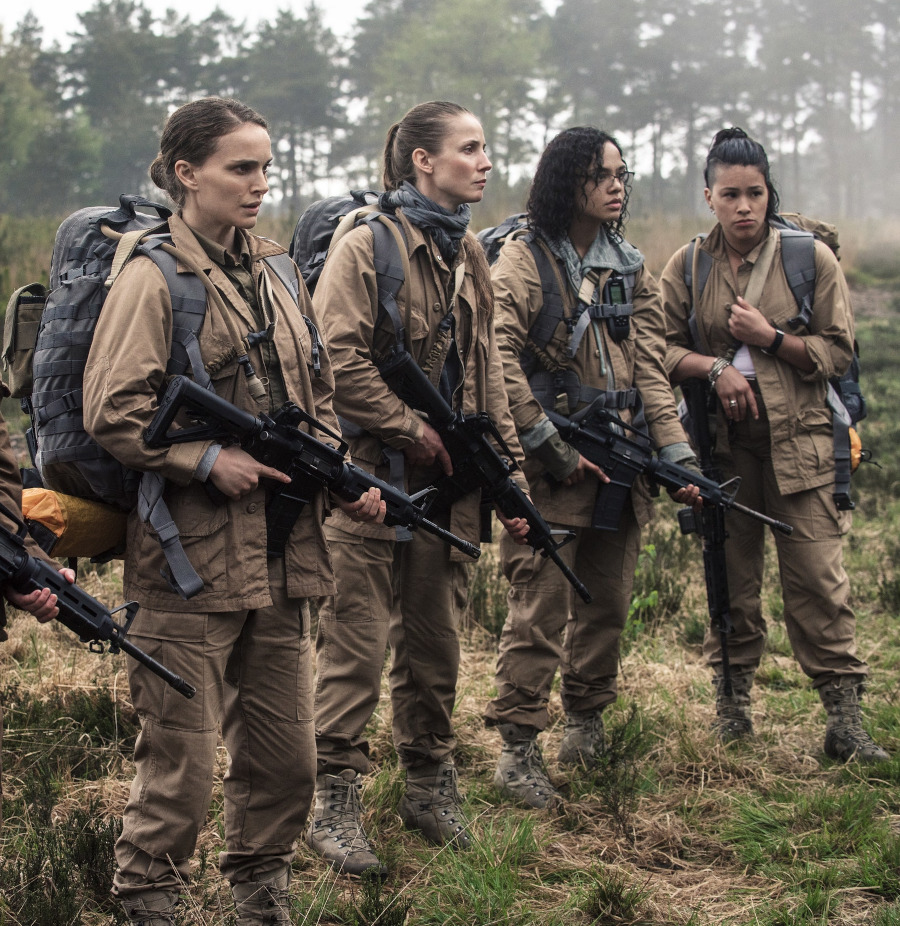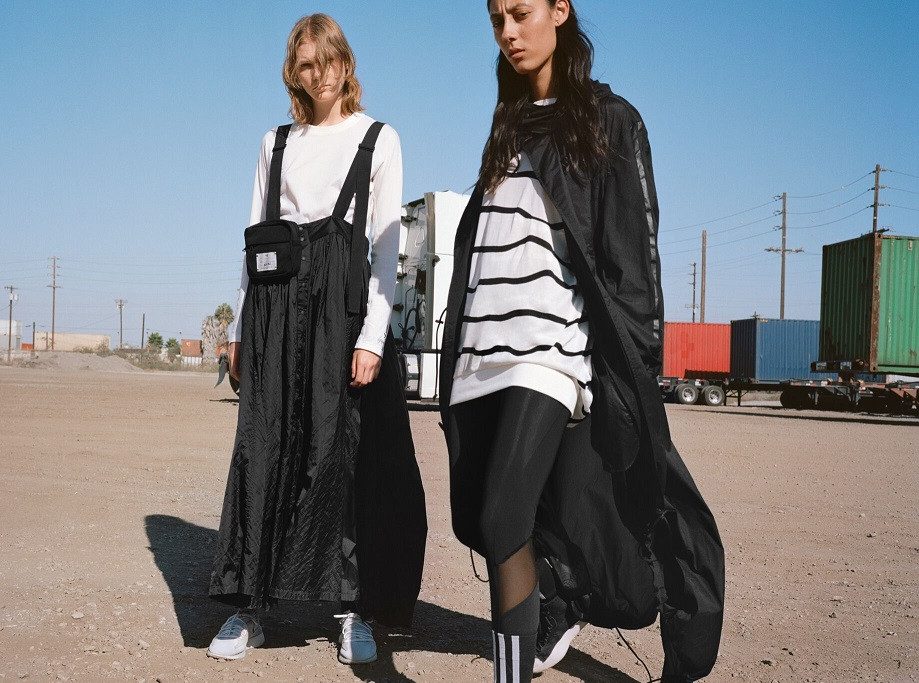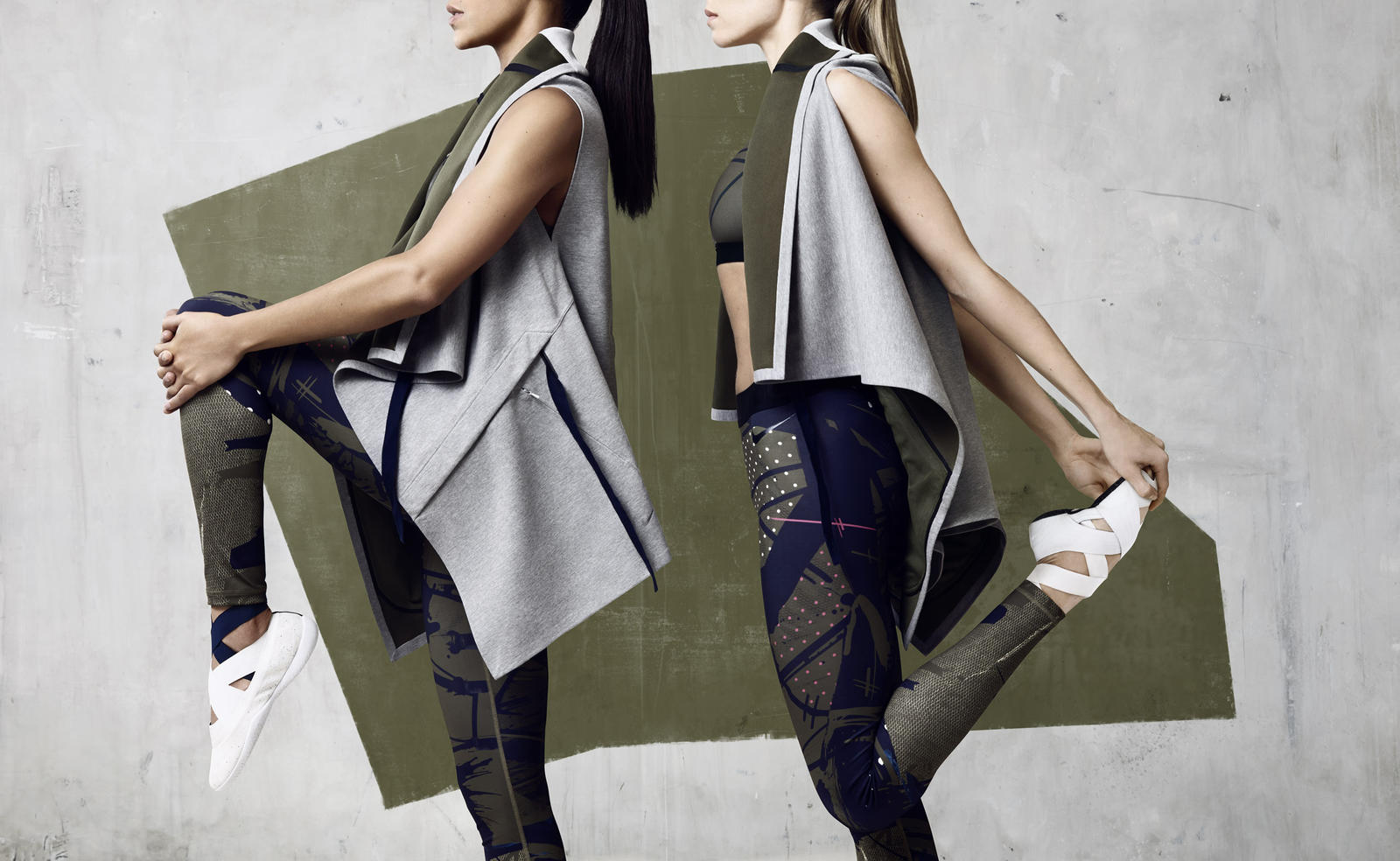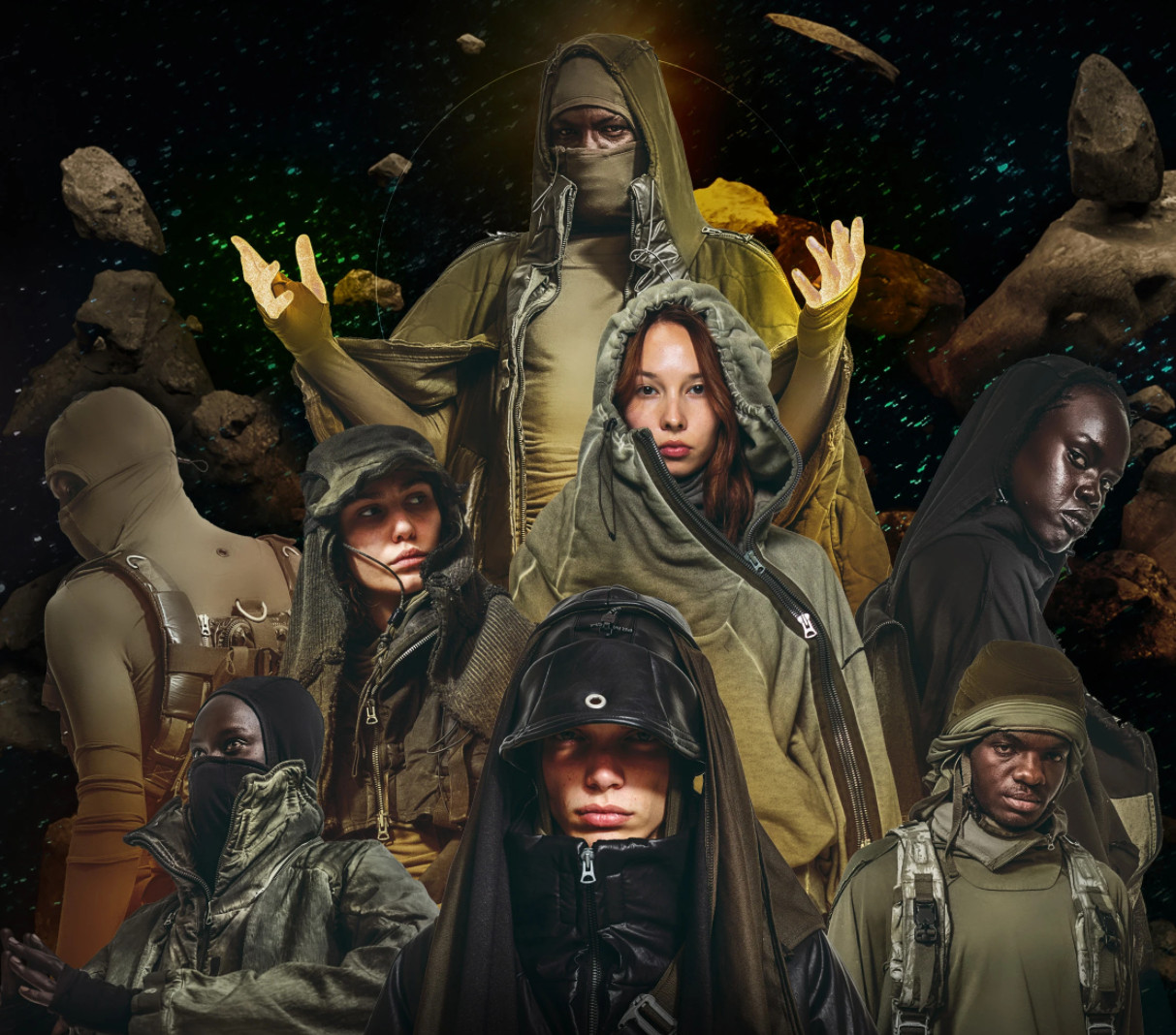Speculative surplus is fashion scavenged from imaginary conflicts. Andrew Lovett-Barron defines the term and examines its relationship to fiction and milsurp.
Whenever we see modern militaries, we’re witnessing industrialized production and movement of things a scale that is difficult to comprehend. Whether it’s the engineering that goes into feeding deployed troops or the rollout of new Army Greens to American service members, militaries represent a centralization of logistic and productive capacity that doesn’t exist anywhere else. But centralization isn’t always efficient or timely, and so there are inevitably surpluses of things, or things in certain places, that must be addressed. There is always something left behind.
This is an essay that tries to make sense of these martial leftovers as not just physical artifacts, but also psychological ones. Psychological damage that bounces around as reminders of conflict both actual and in potentia — free radicals in our apocalyptic imagination. I call this speculative surplus, and this is a first attempt to describe it, or rather start at mapping out which areas to explore.
Googling “How to Remove Blood Stains”
I’ve been wearing mostly military inspired clothes or actual military surplus for years. When I was a student, it was cheap, accessible, and a common thing in Toronto. Later, it was an aesthetic I unconsciously carried on with, not thinking about it too critically. Not until I was a civilian specialist working at the Pentagon did I became self-conscious of this quotidian uniform. To put it bluntly, wandering down E ring in a Buzz Rickson A2 with the Army Air Force logo painted on the shoulder just didn’t feel right, nor did wearing a thrifted Canadian Navy sweater. But that said, my style — such as it was — was just that: my style. Formed from unconscious influences and explicit designs on thrift, performance, tribe, and reduction; I’d found something that was not uniform, but rather a patchwork of uniforms.
There’s a risk in dressing in such militarized styles though, or really any homogenized set of clothes: that one’s style will become costume. Techwear — a style built around technical fabrics and functional apparel using cities as the extreme environment for which they’re designed — is an example of this with its merger of special forces and snowboarding. As an Acronym fan myself, the line between dressing as Mall Ninja Team 6 vs a well considered streetwear outfit is narrow.
Done well, techwear is an elegant statement on what it means to be a city dweller in an era of increasing extremes. Where climate change pummels megalopolises like Tokyo and New York; ambient surveillance becomes the norm for enforcing both corporate and governmental compliance in those zones — techwear is the synthetic armour with which we engage the collapsing anthroposcene. It also looks good most of the time. Here’s an example of a natural techwear fit: technical details borrowed from military and outdoor influences, softened with sneakers and a cap, and a well considered silhouette.
Techwear outfit by Keith Tio.This, below, is not so great. I’d more readily frame this as maximalist cosplay with a fascistic bent.
There’s a character in William Gibson’s Zero History that perfectly encapsulates this lack of self-awareness, or maybe a self-awareness metastasized into something dangerous. Nicknamed Foley for the foliage green colour of his achingly tactical pants, Foley is a somewhat bumbling antagonist whose story reflects his clothes vs. his clothes reflecting the story he came to inhabit. The foliage green wears him. Foley is dismissed by the book’s grand antihero, Hubertus Bigend, as a designer turned equipment fetishist, caught up in a fantasy of holding capabilities that were somehow purchased through gear instead of acquired through training and experience. What the hell are all those pockets for, anyway?
But fantasy has its advantages too, and we can hardly blame the fantasist for wanting their escape. Fleeing the doldrums of office wear, work wear, and the constraints that today’s uniforms place on its wearers is a wonderful feeling. Far from just playing off of Virgil Abloh’s 3% rule for changing a design, why not escape even further and occupy some alternative world of your own construction?
Such fantasist apparel can often represent a kind of speculation about what different worlds might exist if only X and Y were true. Techwear represents some branch of our timeline where such tactical and technical apparel becomes necessary — a world where both climate and governance has collapsed. An adjacent style is Gorpcore, which is composed of brightly coloured fleeces and insulators borrowed from alpinist communities finding their home in the urban milieu. It suggests a more hopeful variety of techwear where to thrive in extremes is to do so in comfort.
ASAP Rocky in full gorp mode.The fact that a techwear fit is identifiable from a gorpcore fit and is identifiable from a normcore fit is frankly incredible, even if that identification takes place within affinity groups familiar enough with the brands that demarcate these stylistic borders. We collectively construct taxonomies of style and individually adhere to them, which points to a deeper quality of the temporal and tribal core that these styles represent.
We dress in our tribes and our timeline, wrapped in the familiar or the aspirational. And for the fantasist — whether bedecked in MOLLE webbing or immaculately armoured in the hedonism of Rick Owns — there’s still often the grounding of their designs in the reality or shared fantasies of today. Gorpcore finds some of its popularity by borrowing the expansive silhouettes of heavy duty military wear like the USAF N-3B parka, with the high visibility and comfort of mountaineering apparel; and situating them in the unlikely locales of city streets and galleries — hard clothes in soft situations. Similarly, techwear emerged from the background radiation of a fading cyberpunk scene, only to mutate through the aesthetic and material availability of the special forces culture — itself a direct outcome of the post-9/11 media and material supply chain.
Each of these styles emerges from a historical and material detritus of past conflicts. And where it’s not war, it’s been the utilitarian output of workwear and global industrialization. Many branches of a healthy tree with deep and enduring roots.
Speculative Surplus
Speculative design was what hooked me on the discipline of design. It’s a set of tools and methods that empower the designer to explore many different alternative scenarios in a disciplined manner through tangible prototyping. Scenarios can be investigated, prodded, turned around, blown up, and reassembled. What’s left in that intentional chaos is often something both deeply foreign and compellingly familiar.
My intentional wardrobe experiment (which turned into Stupid Fits) helped me draw a line between the toolkit of speculative design and the sensibility (or in some cases lack thereof) that has constructed my wardrobe. A thing I quickly realized was that I felt uncomfortable wearing all of one brand. Wearing a uniform wasn’t for me, but cobbling together something distinct from many different uniforms felt natural. In the past, I’d build many small tools for simulating different scenarios — games for getting participants thinking within constraints. Sometimes those constraints are pretty wild, other times they reveal some anxiety inducing combination.
Four fits by Andrew Lovett-Barron.Functionally, this is how the idea of speculative surplus came about: taking the imagination and engineering embedded in specific fantasist styles and treating the artifacts of those styles as the surplus of a story already played out. Taking a painfully real example, the war stories of Vietnam can be compelling, but it’s the reconstructed memories from the experience and stories of healing after that are more so (to me anyway). The countercultural use of the M65 jacket of Vietnam — maybe worn with wide-whale cords and shaggy hair — meant taking a symbol of unimaginable industrial and military might and making it something new. Not divorced from its past, but recontextualized and intermingled with some fantasy and hope for a present that needed to move on.
Speculative surplus is the accretion of histories — both real and imagined — and the overstocking of their militarized industries. It doesn’t glorify the violence or functionality for which such apparel was designed, but rather protects its wearers as they step into what’s next — knowing that we can’t know what comes next.
Criticality of Origin
Speculative surplus can’t be nostalgic, because the context where such a surplus was created is horrible. We have to emphatically and critically engage with the history and the speculation that gives rise to this style of dress in the first place.
One of my favourite brands, Hamcus, is worth engaging with in this way. I’ve written about their design systems before, but the core takeaway is that they use specific, character-driven narratives to situate each new season’s releases. Their main story can be interpreted as an industrialized military fighting an insurrection perpetuating a refugee community’s flight, and their clothes are designed to reflect that: clean uniforms with structured lines and technical materials vs the frayed edges and acid-dyed mixed-material garments of those in flight.
Hamcus. Refugee uniform.Understanding that a jacket has a history – that can be traced backwards to specific models, specific times, and specific sides – has significance. And while we might be constructing our outfits in a combinatorial, remix-like way; those histories are not our own.
Functionality in Context
Surplus emerges from a context where a resource was overproduced for the actual need, and then either a new understanding has been reached — or conditions have fundamentally changed.
In the drawdown to the Vietnam war, the pervasiveness of US Army and Marine uniforms in counterculture was notable.
For my generation, the dominant wars have been in the Middle East, albeit in two very different climates in two very different countries. We’ve seen our flood of industrialized military surplus back into American and coalition countries — from local police wearing desert Multicam in urban environments to the insanity of Mine Resistant Ambush Protecter vehicles being used by police against Black Lives Matter protestors. This reintroduction of militarized apparel changes things; it puts something in the air. It affects the aesthetics of a generation that adopts, rejects, queers, or fetishizes the artifacts of conflict that come home.
Alien: Covenant, outfits by Craig Green.The costume design by Craig Green in Alien: Covenant is a microcosm of this conflict overflow.
Practical and modular, the costumes tell a story of colonizers dressing in a more relaxed, practical way with the militarized garb they have been provided. Across the different characters, there is a uniformity of style, but not a de facto uniform. Instead, in the bubble of their colonial space ship, each individual takes what makes sense for them through fit, style preference, or climate comfort. What might have entered the spaceship defined by regulation and uniform code emerges on the other side reflecting an evolved set of needs.
Gall Clothing.The post-collapse, counter-surveillance aesthetic of the Italian brand GALL clothing is a good example of such a militarized-aesthetic being coopted. Softening and maddening it. Shifting functionality into farce, while still providing utility and protection. If Gall becomes part of one’s speculative surplus wardrobe, how does it co-exist alongside the irreverence of Online Ceramics or the domestic-utility, tactical-aesthetics of a microbrand like AMDUS Project? I’d rather live in a society where the voluminous pockets of the M65 held blunts, than bullets.
A Decisive Moment — Passed
War is a habit humanity can’t seem to shake. So long as there’s a reason for conflict, militaries and their material secretions will continue to suffuse society and its stylistic sensibilities. The trick is to imagine something better with what we have. Can we think more like Maharishi’s Hardy Blechman, tirelessly reconstructing and reimagining the conflict garments of the past into something softer, more critical, more peaceful?
Maharishi.Much beloved by security scholars and military theorists, Carl von Clausewitz has a lot to say about conflict and its relationship to society. He argues that conflict exists within a cyclical relationship between the military, society, and government itself — leading to a decisive moment on the battlefield which defines victory or loss.
Speculative surplus comprises the artifacts of that interrelation between the grand strategy of governments and their acquisition powers, the demands of society and their appetite for conflict, and the sensibilities and actions of conflict actors themselves. The reappropriation of an artifact of an industrialized military state to personal style in a time of peace is perhaps a way that society heals itself — not by forgetting the past but by refocusing on the individual.
Israeli poet Yehuda Amichai exemplifies this refocus on the individual in the context of history when he wrote “The Tourist”:
Once I sat on the steps by agate at David’s Tower, I placed my two heavy baskets at my side. A group of tourists was standing around their guide and I became their target marker.
“You see that man with the baskets? Just right of his head there’s an arch from the Roman period. Just right of his head.”
“But he’s moving, he’s moving!”
I said to myself: redemption will come only if their guide tells them,
“You see that arch from the Roman period? It’s not important: but next to it, left and down a bit, there sits a man who’s bought fruit and vegetables for his family.”
Speculative surplus seeks to imagine the potential conflicts of tomorrow or some alternate timeline, but defang them by coopting them and surfacing the individual of today. The sensibility of this person becomes the uniform of one — reflecting the material and aesthetic systems which one inhabits, but actively constructing something more aspirational from those remembered, lived, and imagined histories.



